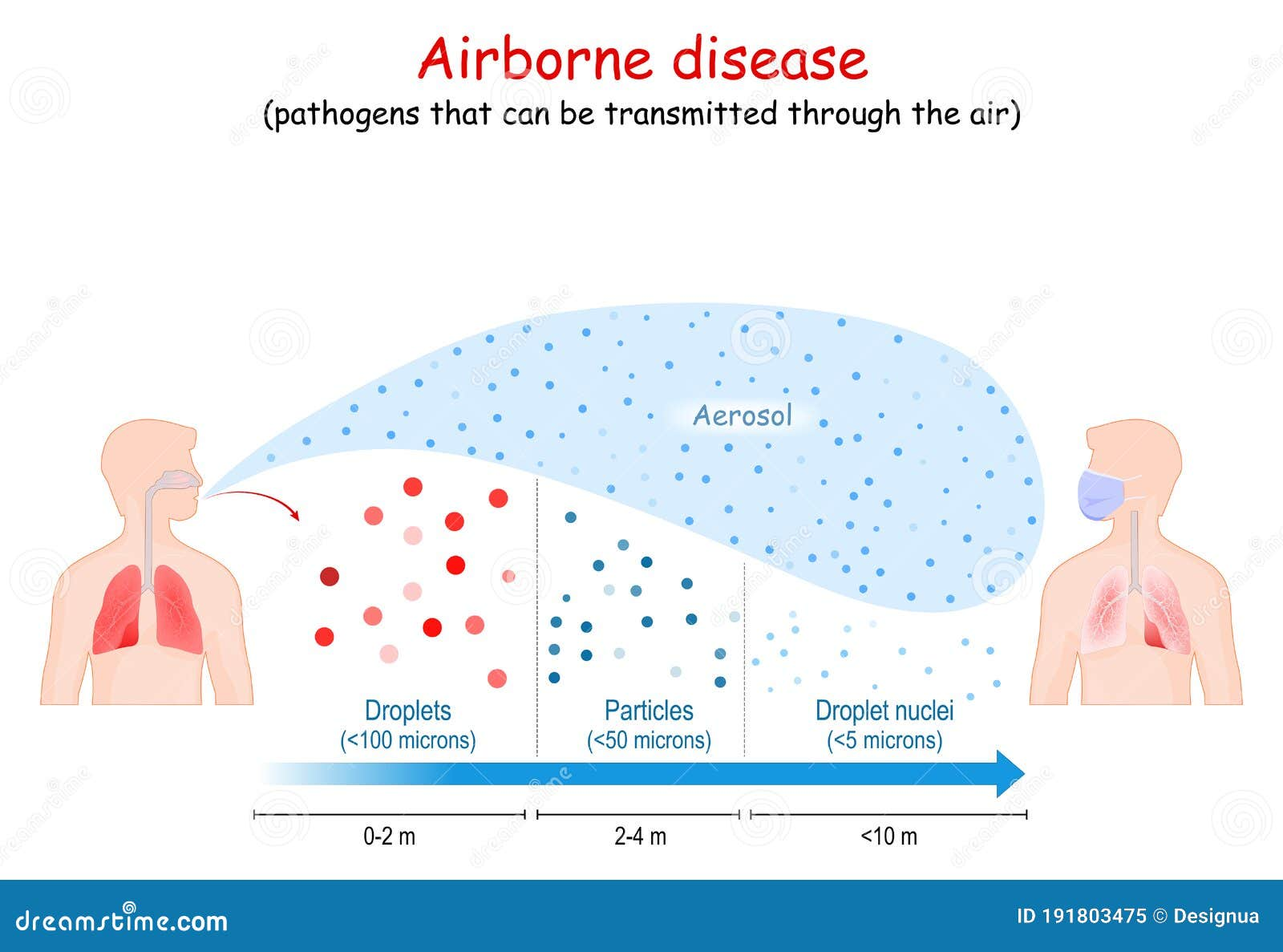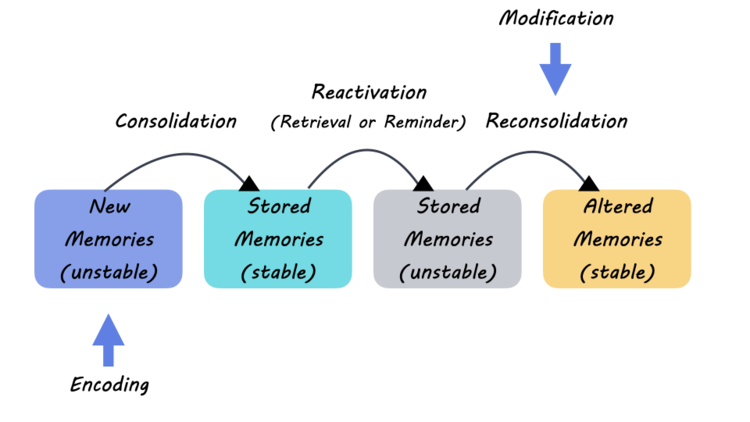Airborne diseases pose a significant threat to public health, as they can easily be transmitted through the air we breathe. Understanding disease transmission is essential to mitigating the risks associated with these pathogens, which can lead to widespread outbreaks. Renowned science writer Carl Zimmer has explored the complexities of airborne infection in his recent works, highlighting historical figures like William Firth Wells, a pioneer in pathogen research. Despite the advances brought forth by the germ theory of disease, the transmission of illnesses through the air has often been overlooked, leading to devastating consequences during outbreaks. By shedding light on this crucial aspect of health science, we can better prepare for and respond to airborne diseases in our communities.
Illnesses spread through the air, commonly referred to as respiratory infections, highlight the delicate balance of our environment and health. These conditions underscore the critical nature of airborne transmission, which can occur through tiny droplets expelled when an infected person coughs or sneezes. As we delve into the world of pathogens in the atmosphere, it becomes clear that historical theories and contemporary understandings, such as the insights provided by seminal figures like William Firth Wells, are fundamental to grasping how these diseases proliferate. The legacies of scientific research remind us of our ongoing battle with infections that drift alongside us, requiring vigilance and informed responses from both the public and healthcare sectors. Learning from past experiences, particularly regarding the dynamics of pathogen spread, is vital for improving our strategies against airborne diseases.
The Legacy of William Firth Wells in Airborne Disease Research
William Firth Wells made significant contributions to the understanding of airborne diseases during a period when such concepts were largely undesirable or overlooked. By pioneering experiments that analyzed how pathogens could be transmitted through the air, Wells sought to change the narrative surrounding disease transmission. His work challenged contemporary notions that strictly linked disease propagation to contaminated water or food, which reflected a prevailing mindset even as germ theory gained traction. Even while faced with criticism and a lack of acceptance, Wells tirelessly pursued his research, underlining the complexities of disease transmission that were being ignored.
Despite the groundbreaking nature of his findings, including the idea that ultraviolet light could eradicate airborne pathogens, Wells’s journey was not without struggles. His abrasive demeanor and interpersonal conflicts hindered wider acceptance of his theories, showcasing how personality dynamics could impede scientific progress. Yet, it was through his affinity for systematic experimentation, a reflection of the principles espoused by the germ theory advocates like Louis Pasteur, that Wells laid the groundwork for a field that is only now gaining the recognition it deserves as critical to public health.
Understanding Disease Transmission Through Airborne Pathogens
Airborne diseases are a compelling area of study because they reveal the complexities of pathogen transmission. Historically, understanding how these organisms spread from one host to another has shifted over centuries, moving from early concepts like miasmas to the sophisticated germ theory of disease. Researchers like Wells and Pasteur confronted public disbelief and institutional resistance. By pinpointing that microorganisms could be airborne, they elucidated a pathway for diseases like tuberculosis and measles, which had profound implications for public health policy.
In current times, the implications of airborne disease transmission have become ever more crucial, especially in light of recent global health crises. Understanding the environmental factors contributing to airborne pathogens and developing mitigation strategies are essential. The work of scientists exploring pathogen behavior in the air continues to align with Wells’s foundational inquiries, expanding our knowledge and influencing emerging health policies that are capable of adopting preventive measures against airborne diseases.
Carl Zimmer’s Perspectives on Airborne Diseases
Carl Zimmer offers a contemporary lens through which we can analyze the evolution of ideas around airborne diseases and the individuals who advocate for them. His narratives often emphasize how scientific personalities shape public discourse on critical health issues. In his recent works, Zimmer draws connections between historical scientific figures and today’s health challenges, suggesting that while progress is often made through research, it is equally influenced by how compellingly those ideas are communicated. His reflections on Wells’s difficulties illustrate a broader challenge in science: to convey complex ideas in ways that resonate with the public.
Furthermore, Zimmer’s insights into the importance of personality highlight an often-overlooked aspect of scientific advancement—communication. Engaging the public in discussions about airborne diseases, especially when the stakes are health-related, requires not only rigorous research but also the ability to express findings compellingly. The complexities of disease transmission can only be effectively addressed by propagating awareness through diverse channels, ensuring that knowledge reaches various stakeholders from policymakers to the general public. Thus, Engel’s narrative becomes a call to action for scientists to cultivate their communication skills alongside their research.
The Role of Personality in Pathogen Research
The personality of scientists plays an undeniable role in the acceptance and dissemination of their work, particularly in fields like pathogen research where public health outcomes are at stake. Zimmer highlights the case of William Firth Wells, who, despite his critical discoveries regarding airborne pathogens, encountered significant barriers due to his personality traits. This raises pertinent questions about the compatibility of scientific inquiry with effective public engagement and communication. The challenge lies in fostering a research culture that values diverse personalities while still promoting collaboration and clarity in conveying crucial findings.
Moreover, the dynamics between scientists and their peers can affect collaborative efforts in understanding diseases. This is particularly excruciating in fields where interdisciplinary input is essential to feed into layered discussions like those surrounding germ theory and its implications. When researchers can communicate effectively and work well within teams—amplified by strong interpersonal skills—they can advocate more effectively for their innovative ideas, thus ensuring that critical discoveries about airborne diseases are not lost on the public or policymakers.
Evolution of Airborne Disease Control Practices
The evolution of airborne disease control practices has been shaped by dedicated research and ongoing developments in the understanding of how pathogens behave in environments. Wells’s initial experiments laid the groundwork for what would eventually become standard practices like ventilation control and air filtration in healthcare settings. As researchers continue to investigate airborne transmission paths, the framework for controlling such diseases has evolved along with technological advancements that support better air quality management. These historical practices inform current guidelines, especially critical in the wake of airborne viral outbreaks.
With emerging technologies and new findings, today’s public health responses to airborne diseases are more robust. They are informed by a combination of historical insights—like those of Wells—and cutting-edge microbial research. Addressing modernization in public health practices means synergy between past wisdom and future innovations. For instance, the adaptations made in response to pandemics reflect a collective understanding of airborne transmission that Wells and others fought to prove. Therefore, continuous research is paramount to refine these lessons, ensuring health systems can mitigate current and future airborne diseases effectively.
The Impact of Germ Theory on Public Health
The germ theory of disease has radically changed public health landscapes, establishing a scientific basis for understanding infection dynamics. This paradigm shift demystified the origins of disease, allowing for targeted prevention strategies and improved hygiene practices. By establishing that microscopic organisms were the culprits behind many ailments, the germ theory underscored the importance of comprehensive research, much like that of Wells, which aimed to identify precise transmission pathways, including those via the air.
As public health initiatives evolve, the germ theory foundation supports outreach and educational programs that equip communities with knowledge on how diseases are transmitted and controlled. This knowledge is not just academic; it translates into tangible actions that individuals and institutions can take. Understanding airborne disease dynamics empowers populations to engage in practices that limit pathogen spread, thereby enhancing community resilience against outbreaks and promoting overall public health.
Current Challenges in Airborne Disease Research
A pressing challenge in airborne disease research today is balancing rapid scientific advancement with public comprehension. The acceleration of technological capabilities necessitates a thorough understanding of airborne pathogens and their transmission, especially as new strains emerge. However, communicating these complex findings remains daunting, as historical figures like Wells would attest. Ensuring that the public is informed about potential threats involves translating intricate research into digestible messages.
Moreover, the interdisciplinary nature of studying airborne diseases requires cooperation among various scientific fields. Addressing the multifaceted challenges posed by airborne pathogens involves integrating insights from microbiology, public health, and environmental science. Facilitation of unified research efforts is crucial to develop comprehensive approaches to disease prevention, which will enhance not only the academic understanding of airborne pathogen transmission but also its application in real-world contexts.
Historical Perspectives on Airborne Infection
Historically, the understanding of airborne infections has faced considerable obstacles, such as societal beliefs and institutional inertia. Before the widespread acceptance of germ theory, many held onto antiquated notions like miasmas, which limited the development of effective public health measures. Figures such as Carl Zimmer have illuminated how past researchers struggled against these prevailing misconceptions, forcing their theories into the limelight through rigorous experimentation. The slow acceptance of airborne disease concepts highlights the need for continuous dialogue between historical insights and contemporary scientific thought.
Through examining historical perspectives, modern-day researchers can glean insights from the past that can help frame current challenges related to airborne diseases. Recognizing the journey that brought us to understand these infections better provides an invaluable context for new scientific inquiries. Emphasizing this historical narrative not only pays homage to the pioneers like Wells but serves as a critical reminder of how perseverance in the face of adversity is essential for future breakthroughs.
Future Directions in Airborne Pathogen Research
Looking ahead, research on airborne pathogens promises to expand significantly as technology evolves and our understanding deepens. New methodologies, including genomic and molecular techniques, enable the identification and characterization of previously obscure airborne pathogens, paving the way for more accurate diagnostics and treatment approaches. The exploration of ventilation and air circulation systems in crowded settings, as discussed by scientists inspired by Wells, will play an instrumental role in developing sound public health strategies that mitigate airborne disease transmission.
Moreover, engaging the public in discussions about airborne disease prevention is essential for ensuring compliance with health guidelines. Future research must prioritize not only scientific inquiry but also the social dynamics surrounding health communication. Establishing effective channels to relay findings to the public can lead to better acceptance of preventive measures, enhancing community health initiatives and ultimately saving lives. The road ahead is paved with both challenges and opportunities, echoing Wells’s struggles, yet brimming with potential for understanding and combating airborne diseases effectively.
Frequently Asked Questions
How do airborne diseases transmit pathogens through the air?
Airborne diseases transmit pathogens when infectious microorganisms are expelled into the air through respiratory droplets or aerosols from coughing, sneezing, or talking. These tiny particles can remain suspended in the air for extended periods and be inhaled by others, leading to disease transmission. Understanding this transmission method is crucial for public health strategies to minimize infection risks.
What role did William Firth Wells play in airborne disease research?
William Firth Wells was pivotal in the research of airborne diseases; he pioneered the study of how pathogens could be transmitted through air. His experiments demonstrated that human exhalations spread microbes via air, contributing significantly to our understanding of airborne infection and germ theory, despite facing challenges in his career due to his personality and conflicts with colleagues.
What is the significance of Carl Zimmer’s work on airborne diseases?
Carl Zimmer’s work highlights the historical challenges and breakthroughs in the understanding of airborne diseases. His recent book discusses key figures like Wells and emphasizes the often-overlooked concept that pathogens can be transmitted through the air, which is essential for modern disease control and prevention strategies.
How has the germ theory influenced the perception of airborne diseases?
The germ theory has been crucial in changing perceptions about airborne diseases by establishing that many infections are caused by microorganisms rather than ‘bad air’ or miasmas. This scientific shift allowed researchers to focus on how airborne pathogens spread, leading to improved public health measures and strategies to control outbreaks effectively.
What evidence exists that ultraviolet light can kill airborne pathogens?
Research by William Firth Wells demonstrated that ultraviolet light could effectively kill airborne pathogens. His experiments in controlled environments showed how UV radiation could help eliminate infectious agents in the air, supporting the development of technologies aimed at purifying air in medical settings and improving public health.
Why were airborne diseases historically misunderstood in terms of disease transmission?
Historically, airborne diseases were misunderstood due to early theories of disease transmission, such as the miasma theory, which attributed illness to bad air. It wasn’t until scientific research, including the work of researchers like Wells and advocates of the germ theory, that the understanding evolved, recognizing microorganisms as the true agents of airborne disease transmission.
What measures can be taken to prevent the transmission of airborne diseases?
Preventing airborne disease transmission involves several measures: improving ventilation in indoor spaces, using air filtration systems, implementing proper respiratory hygiene, and utilizing ultraviolet light in areas where airborne pathogens may spread. Additionally, vaccination against airborne diseases can significantly reduce the incidence of these infections.
| Key Points | Details |
|---|---|
| Airborne Diseases Research | Carl Zimmer discusses how a key researcher’s personality affected the acceptance of airborne diseases as a method of pathogen transmission. |
| William Firth Wells | His research in the 1930s demonstrated that pathogens could be transmitted through the air, backed by experimental evidence. |
| Historical Context | The concept of ‘bad air’ was proposed by Hippocrates, and significant resistance existed against the idea of airborne transmission until more recent times. |
| Impact of Personality on Research | Wells’ unpleasant demeanor and conflicts with superiors hindered his research and acceptance of his findings. |
| Importance of Personality in Science | Zimmer argues that individual personalities can influence the progress of scientific acceptance, specifically in airborne disease research. |
| Clinical Applications | Wells’ research informed methods to control airborne infections, such as the use of UV light to kill pathogens. |
| Legacy of Research | The findings about airborne diseases by Wells eventually aided control measures during later outbreaks but took decades to be universally accepted. |
Summary
Airborne diseases are a critical concern in public health, as they can be transmitted through the air, influencing how infections spread. The work of researchers like William Firth Wells played a significant role in our understanding of this transmission method, despite facing significant personal and professional obstacles. Carl Zimmer’s insights into how personality traits can impact scientific acceptance highlight the importance of effective communication in advancing public health knowledge.









